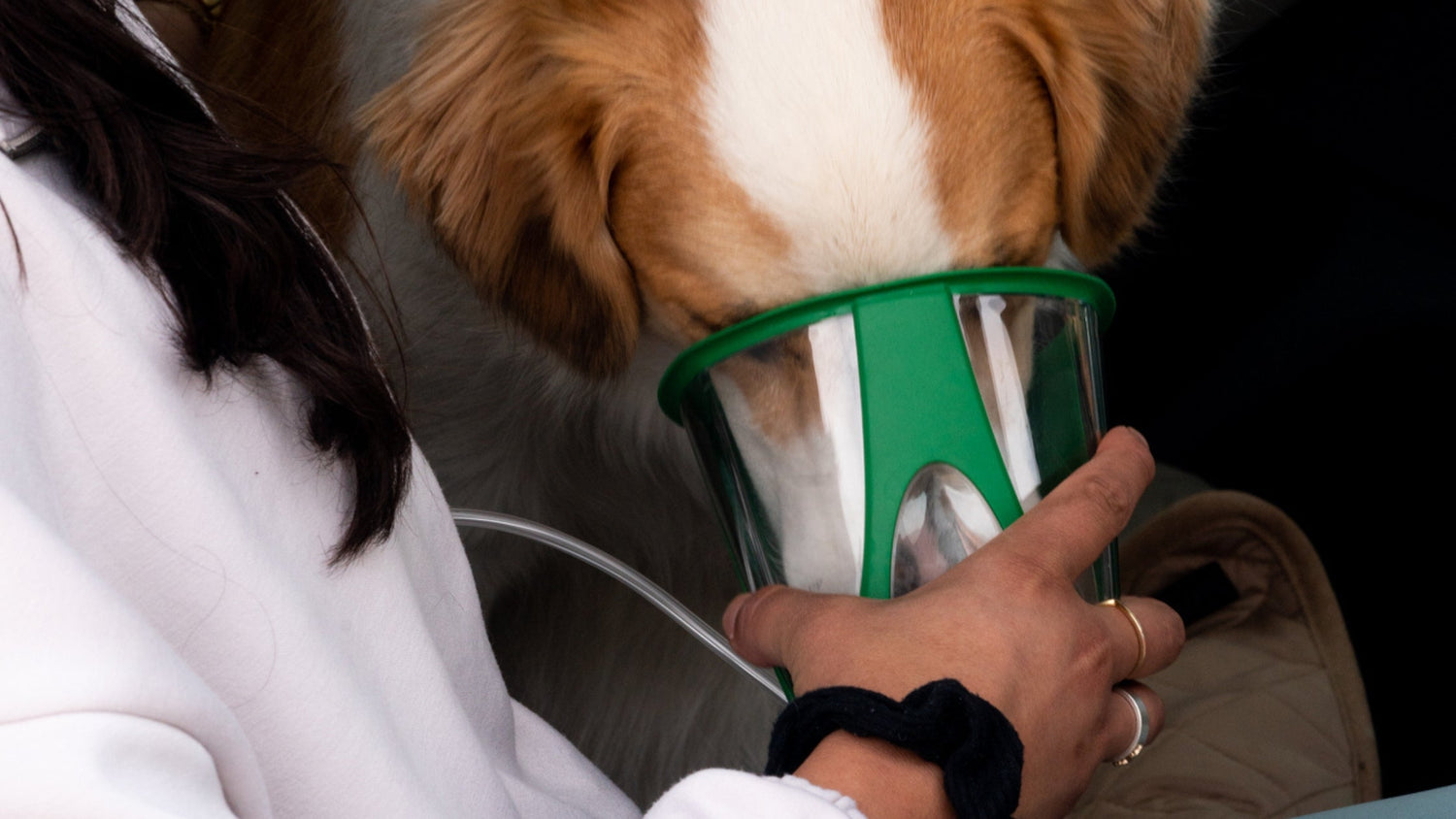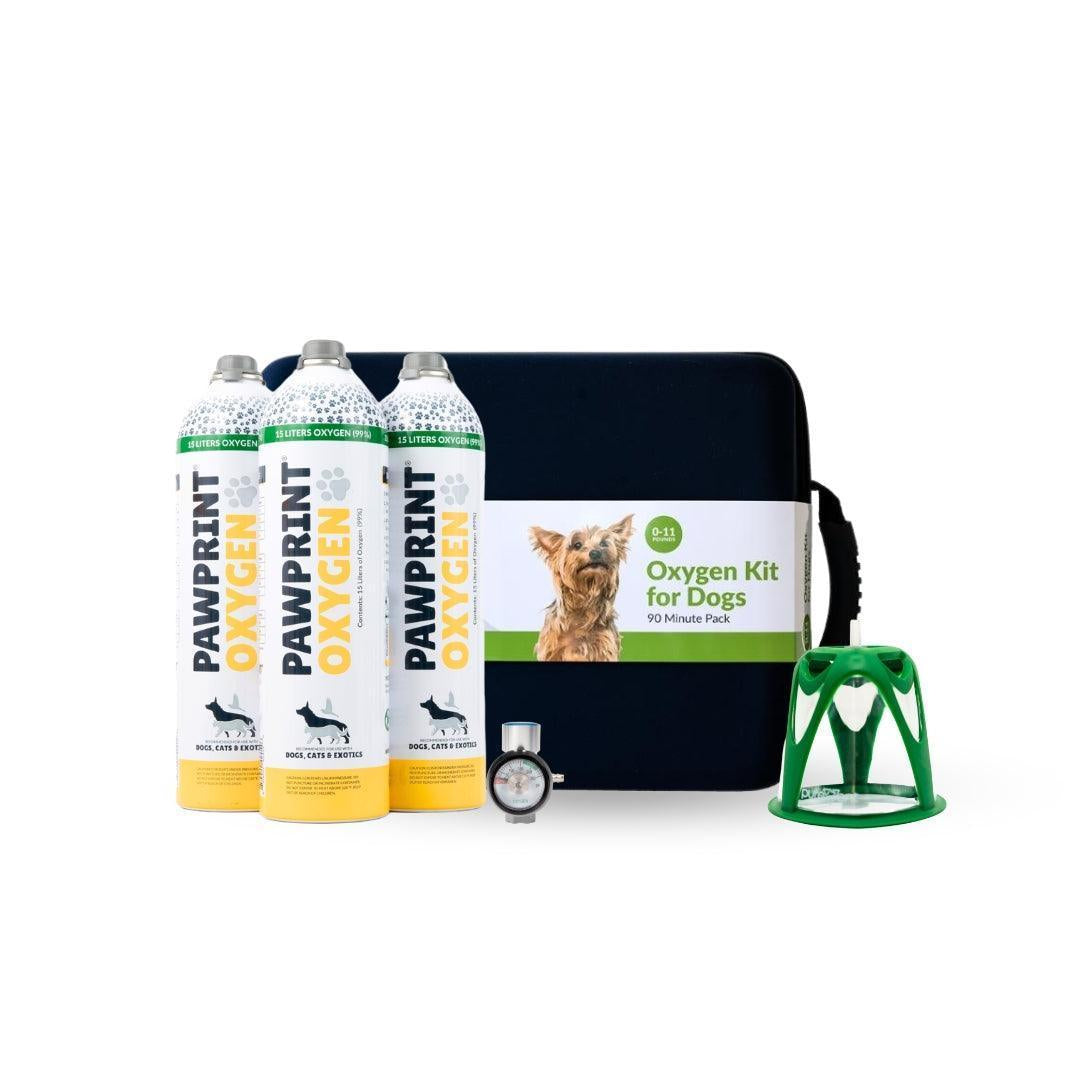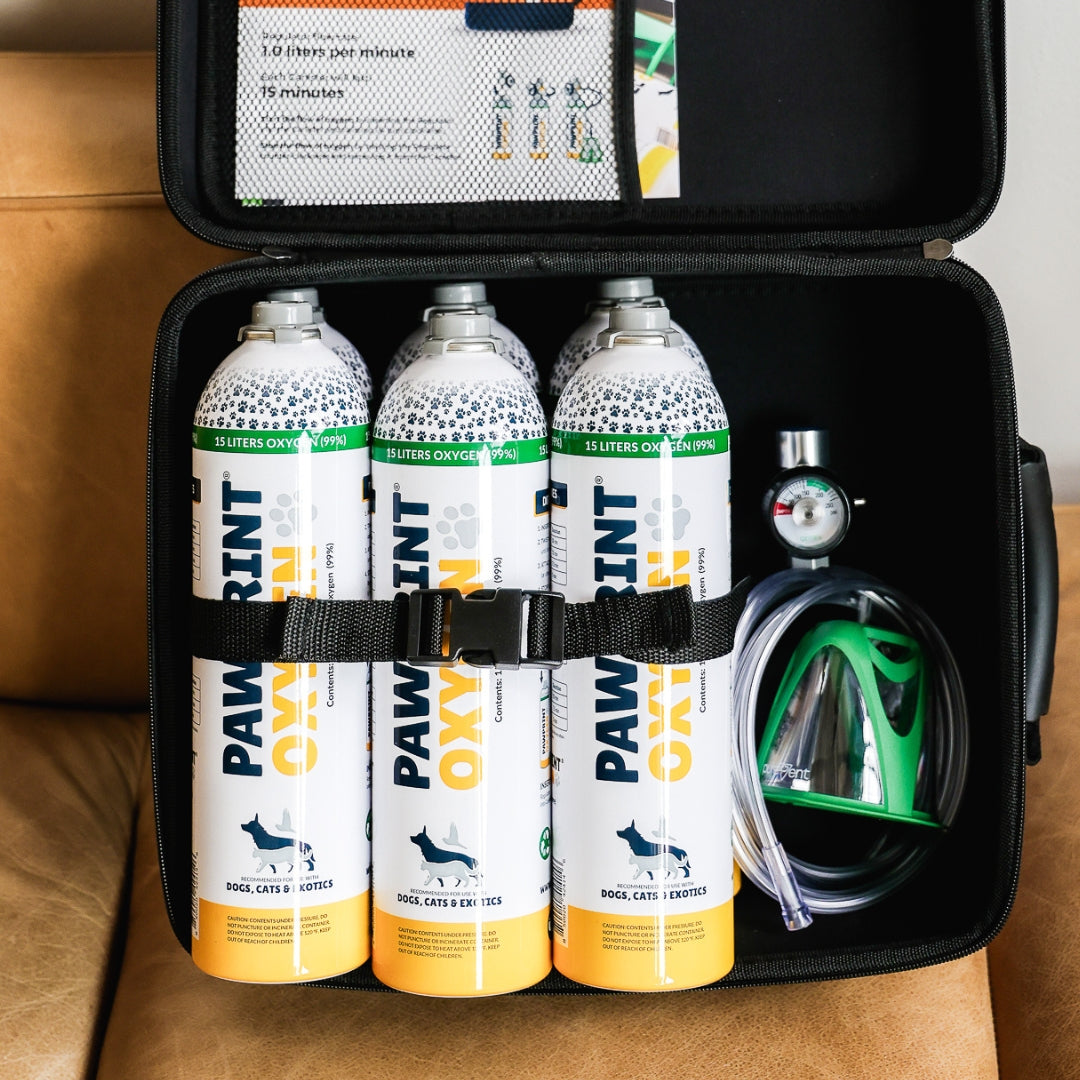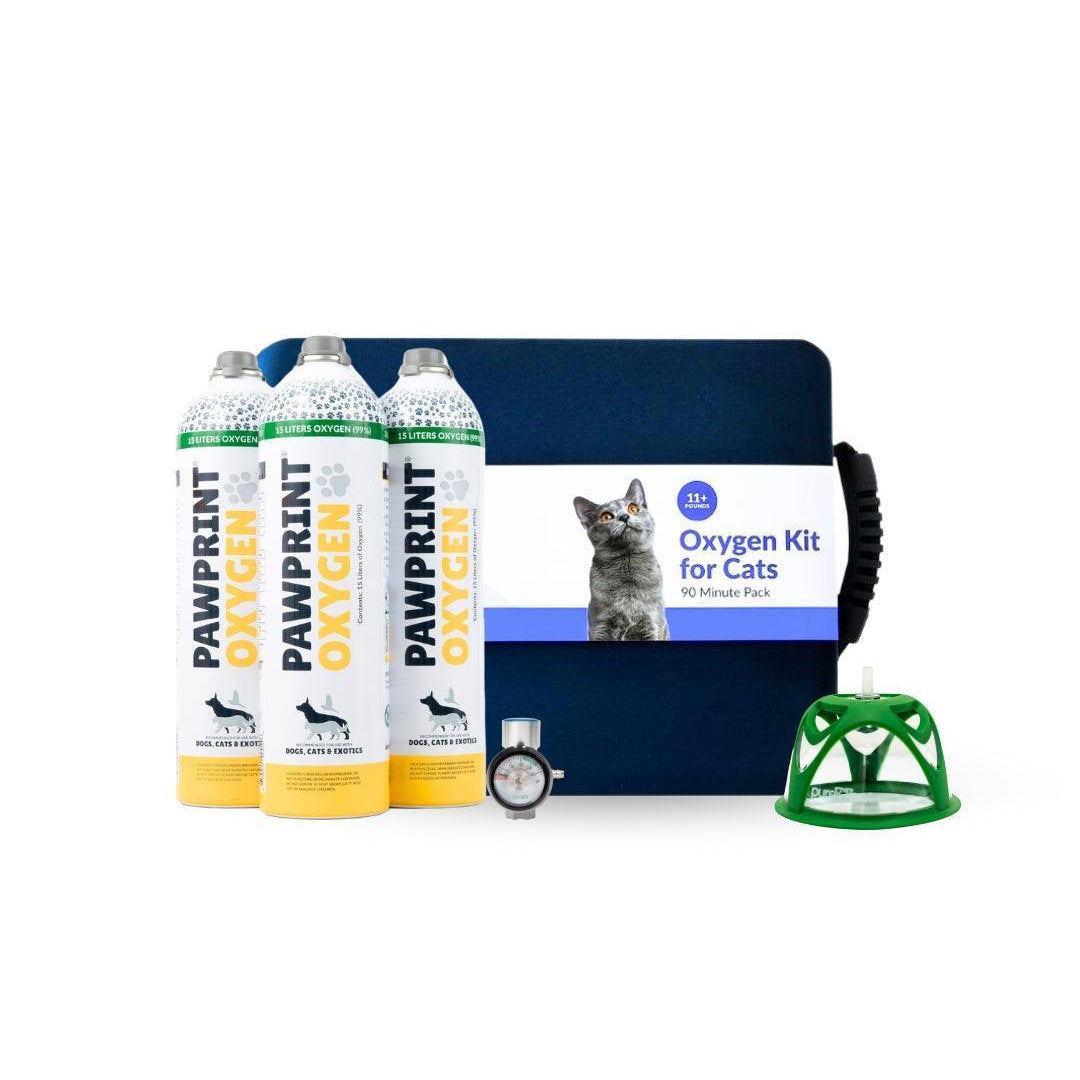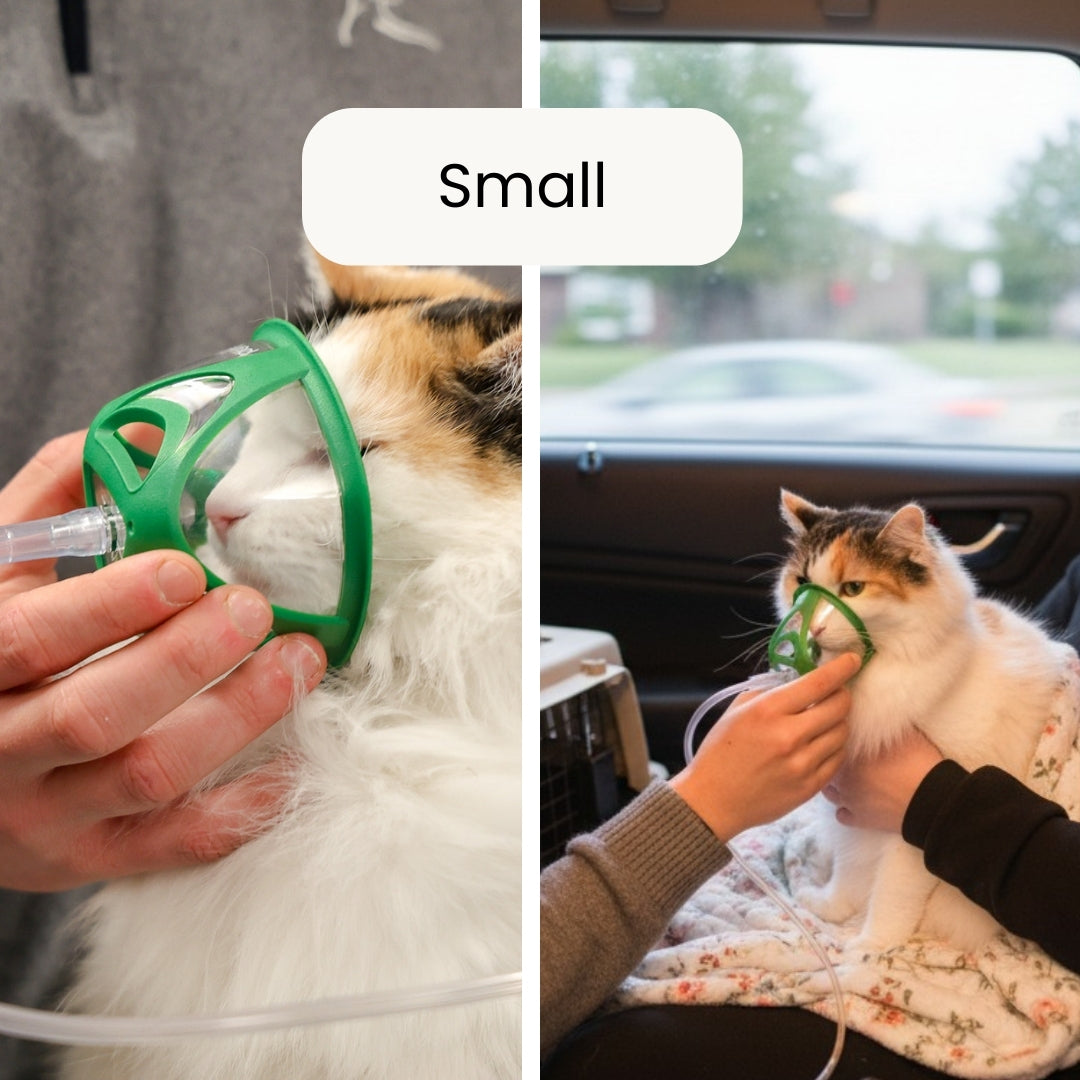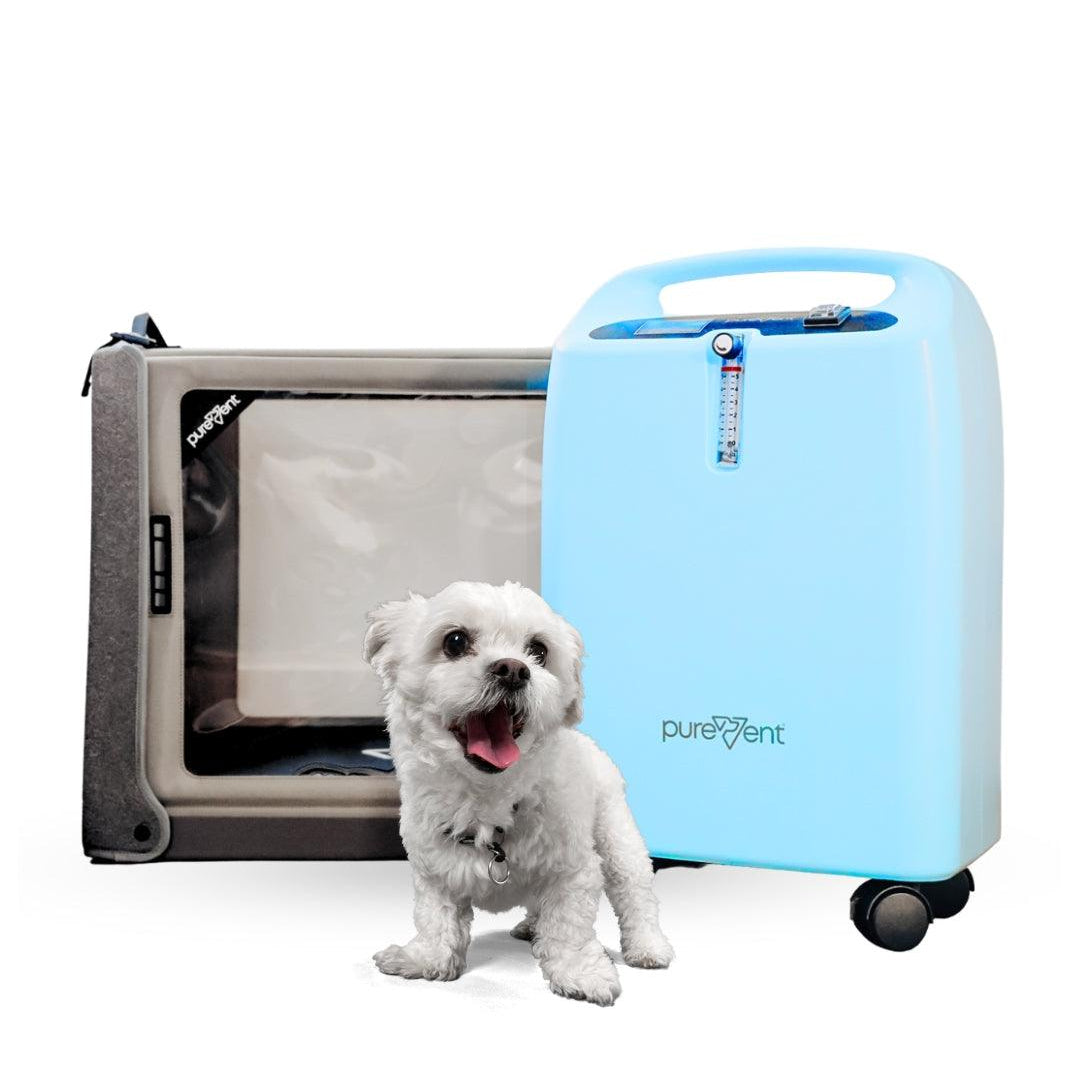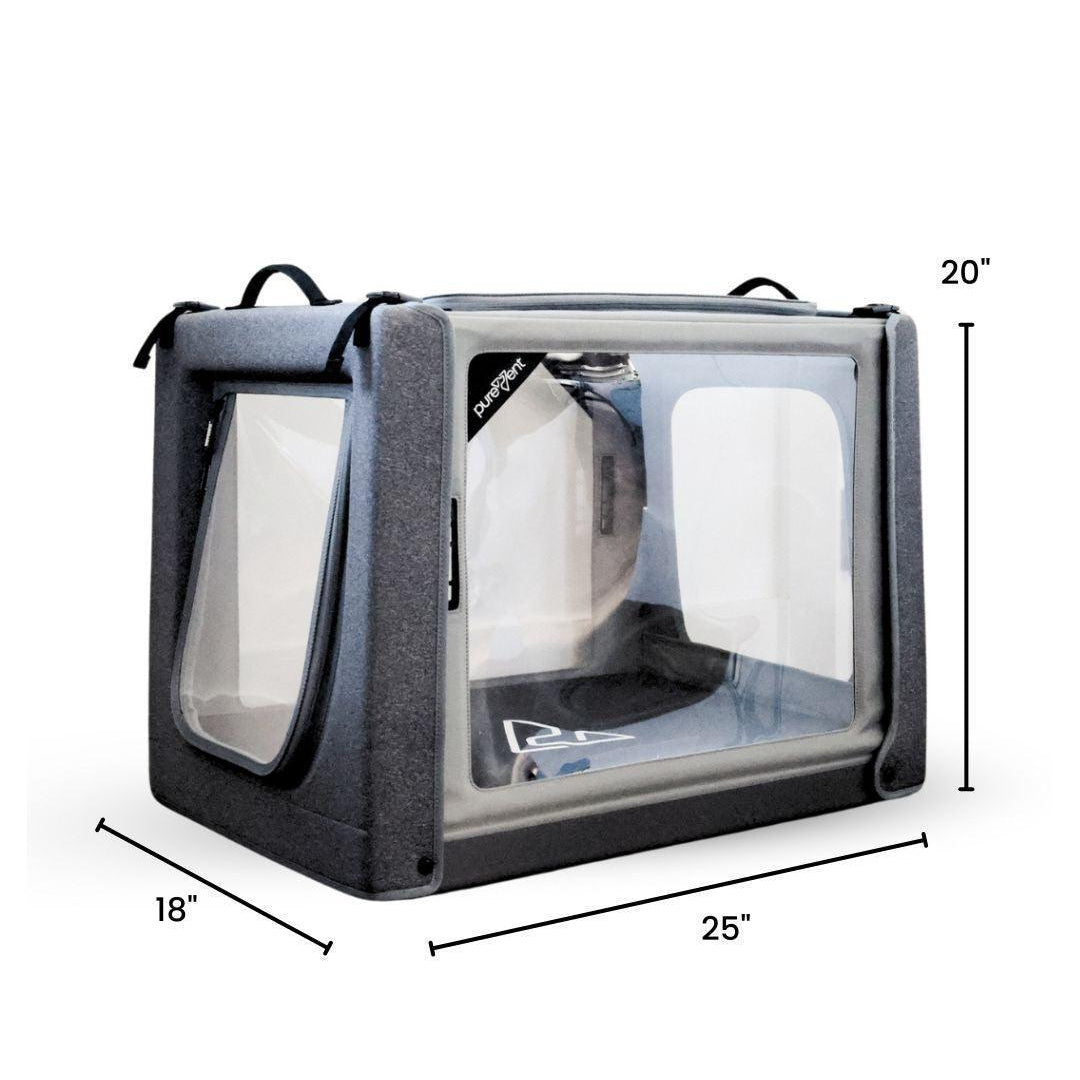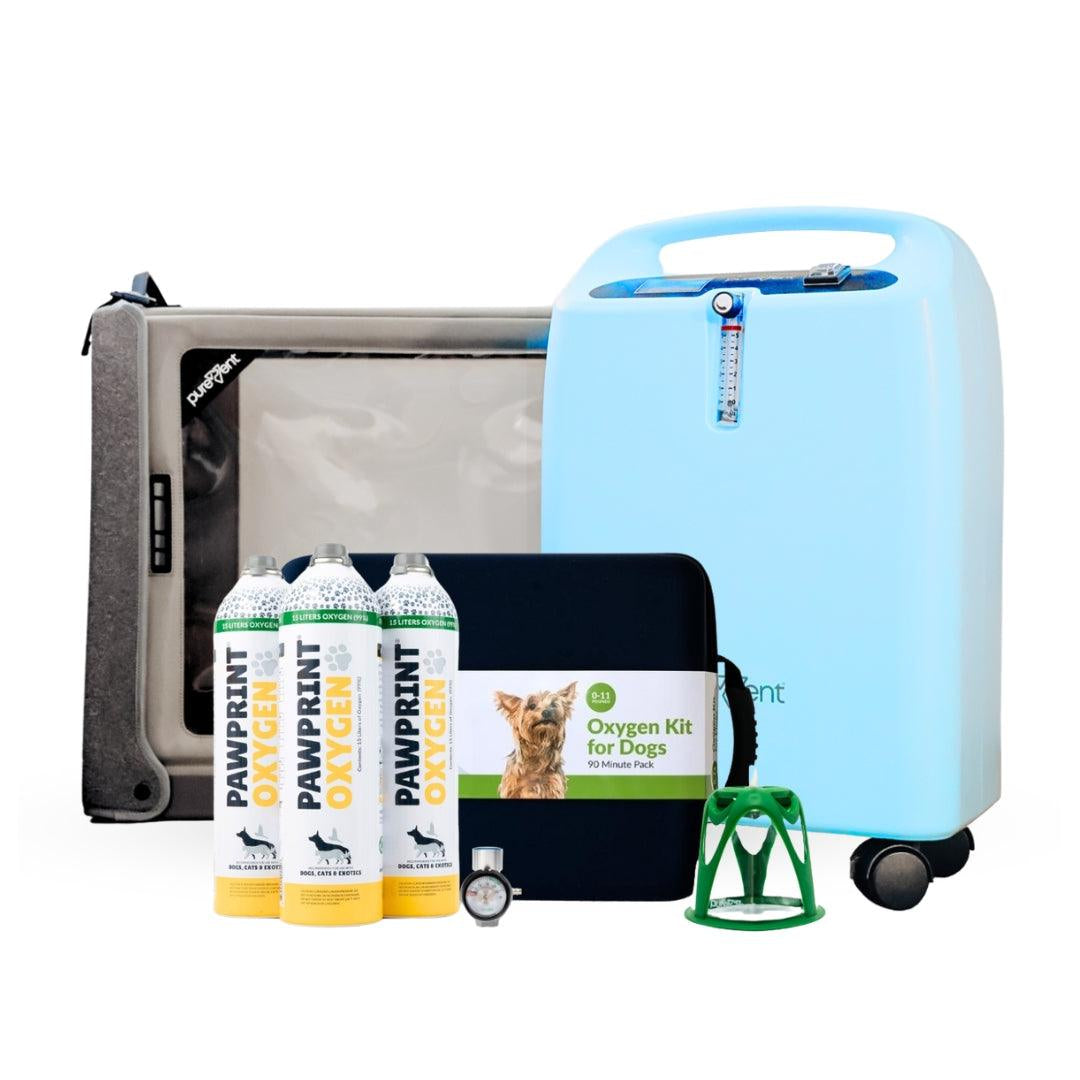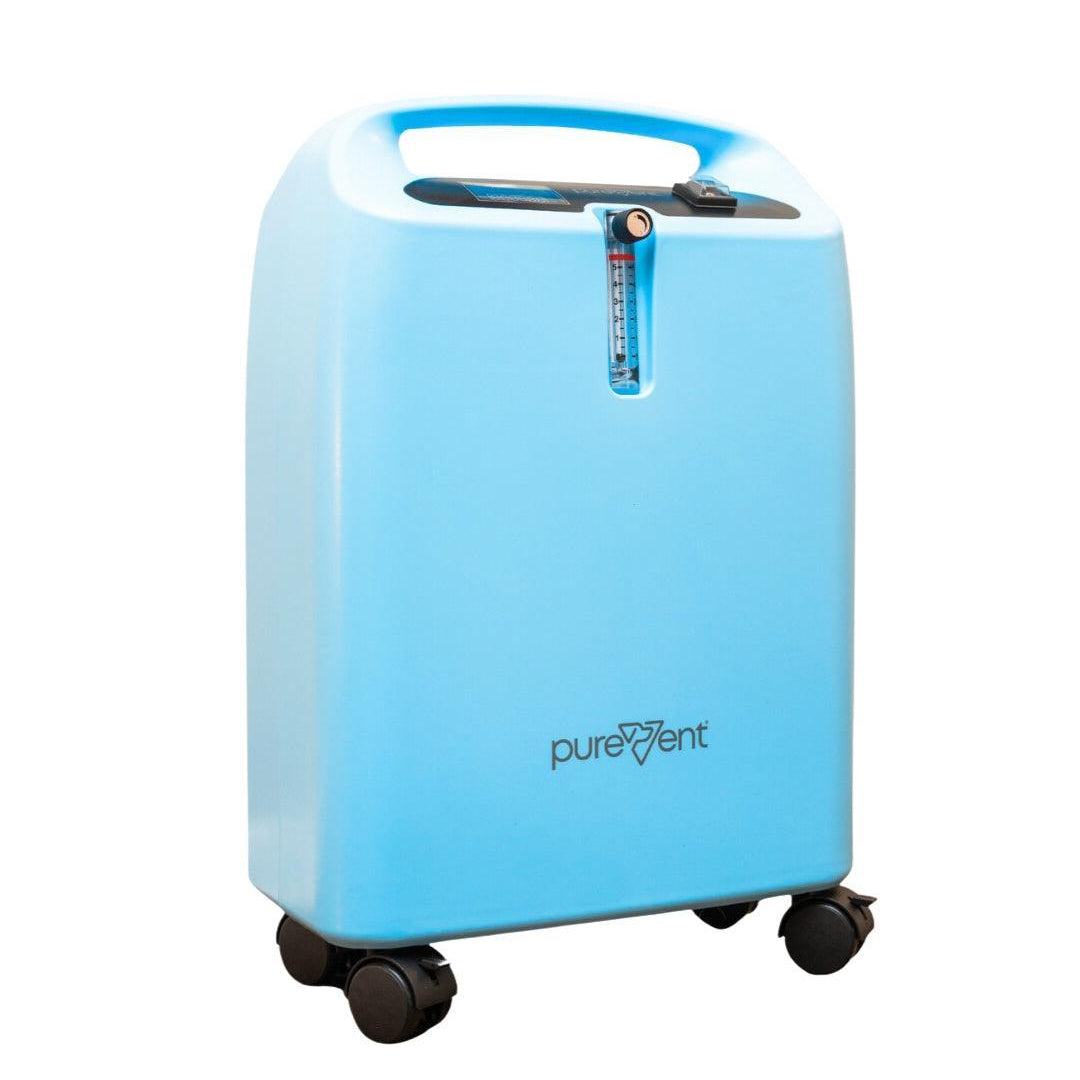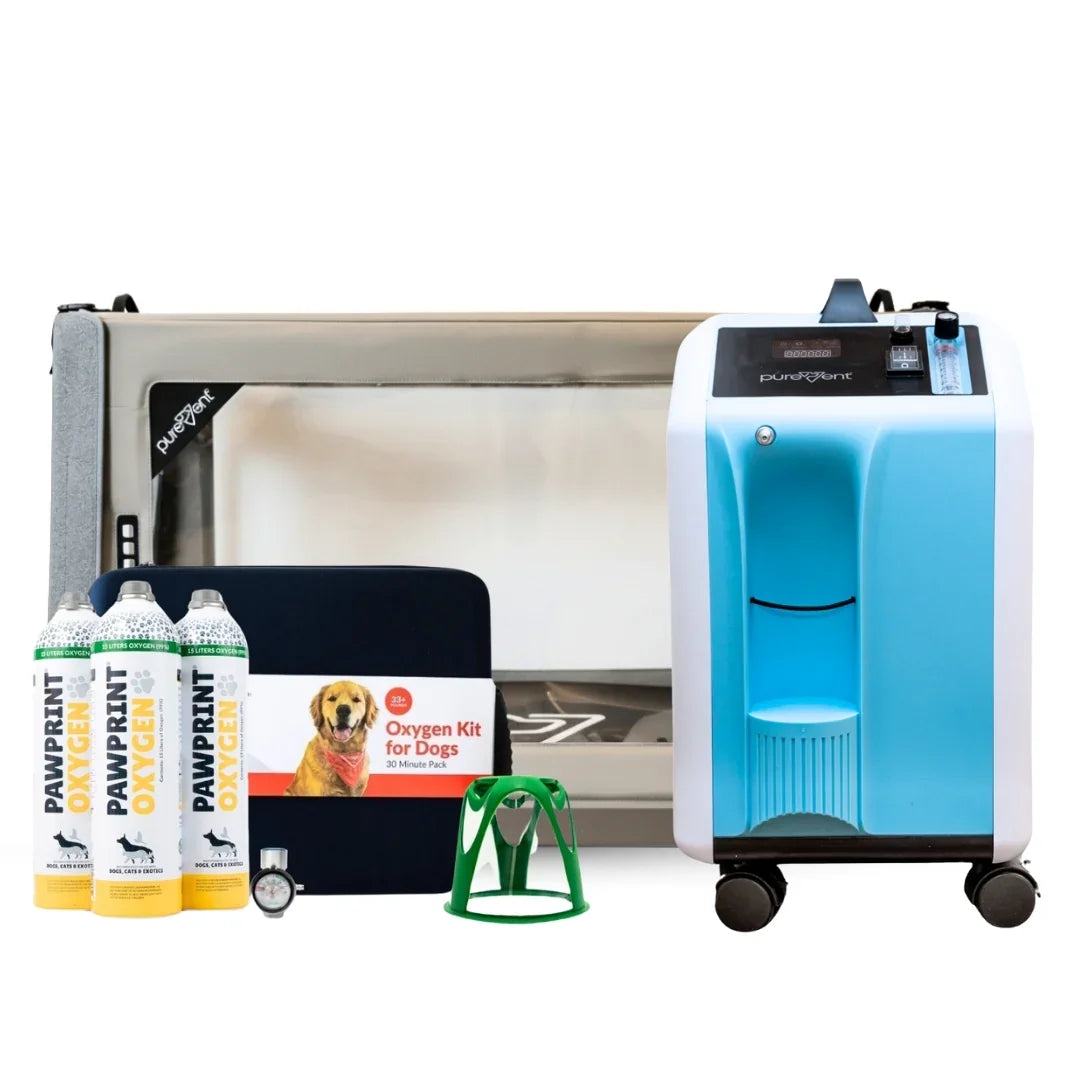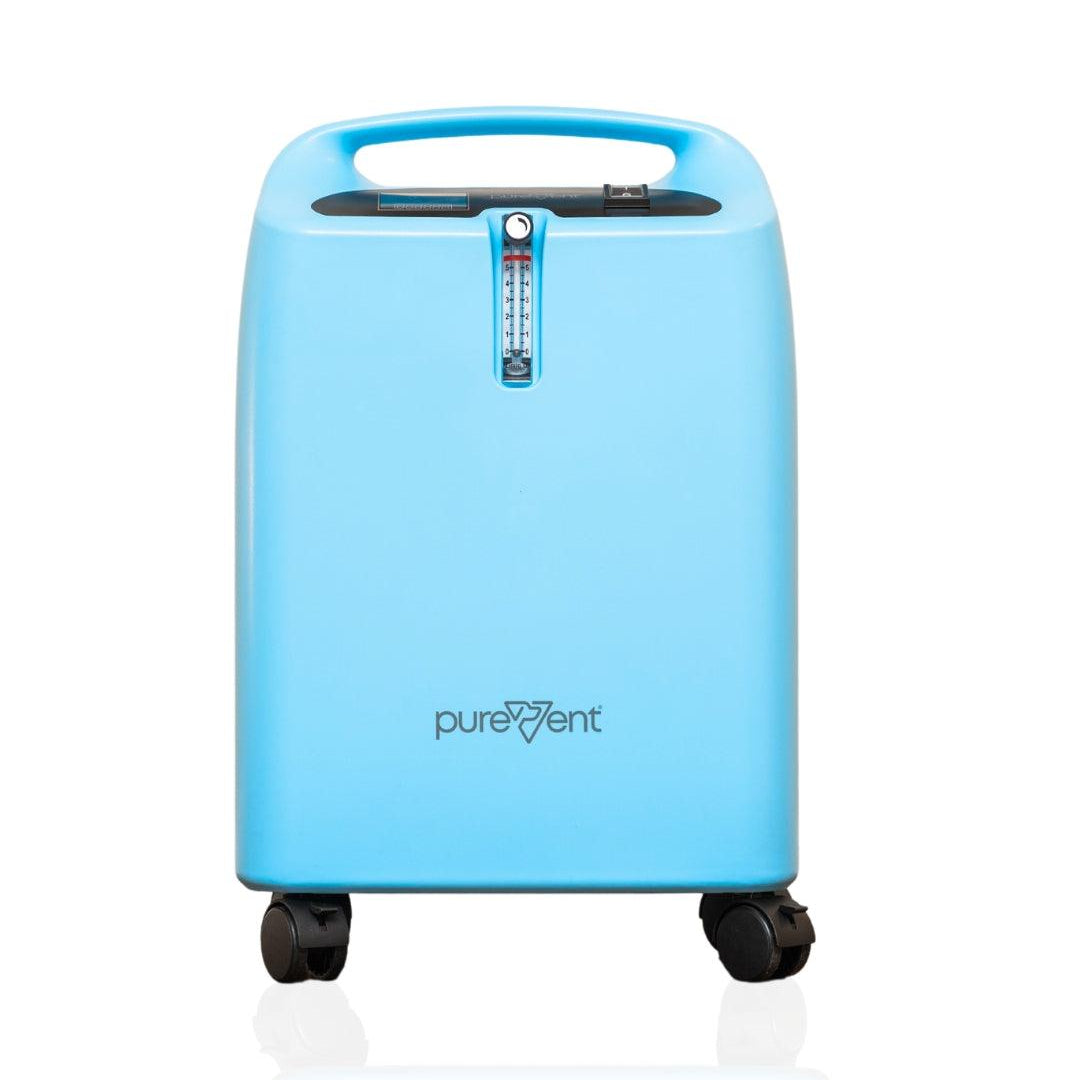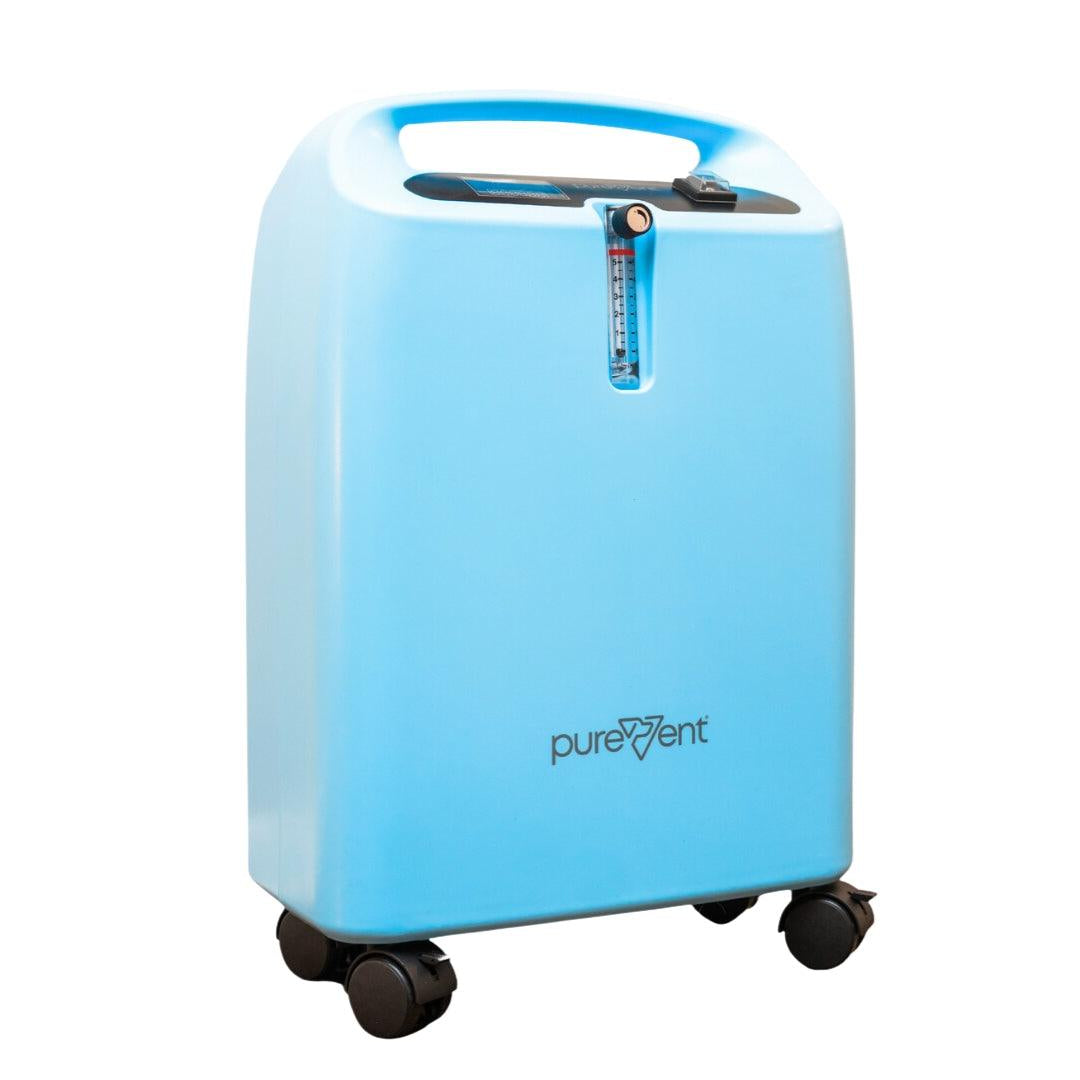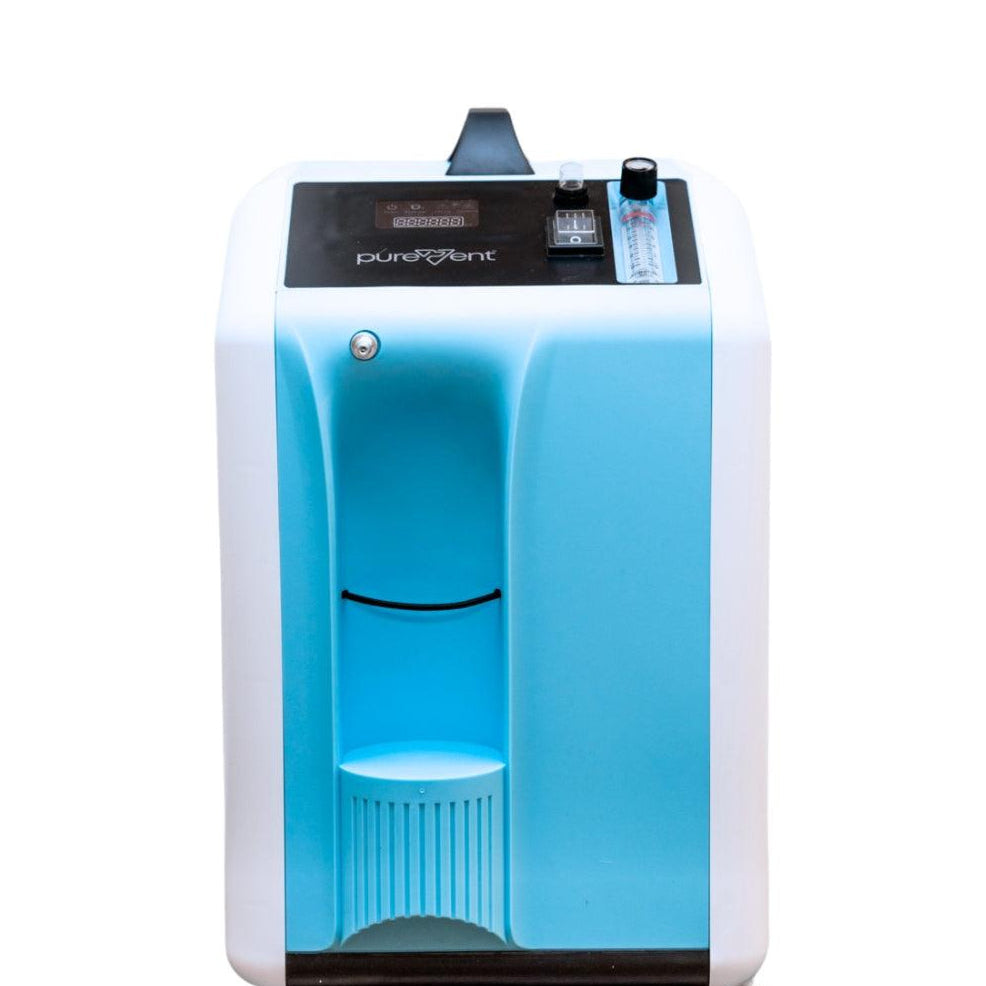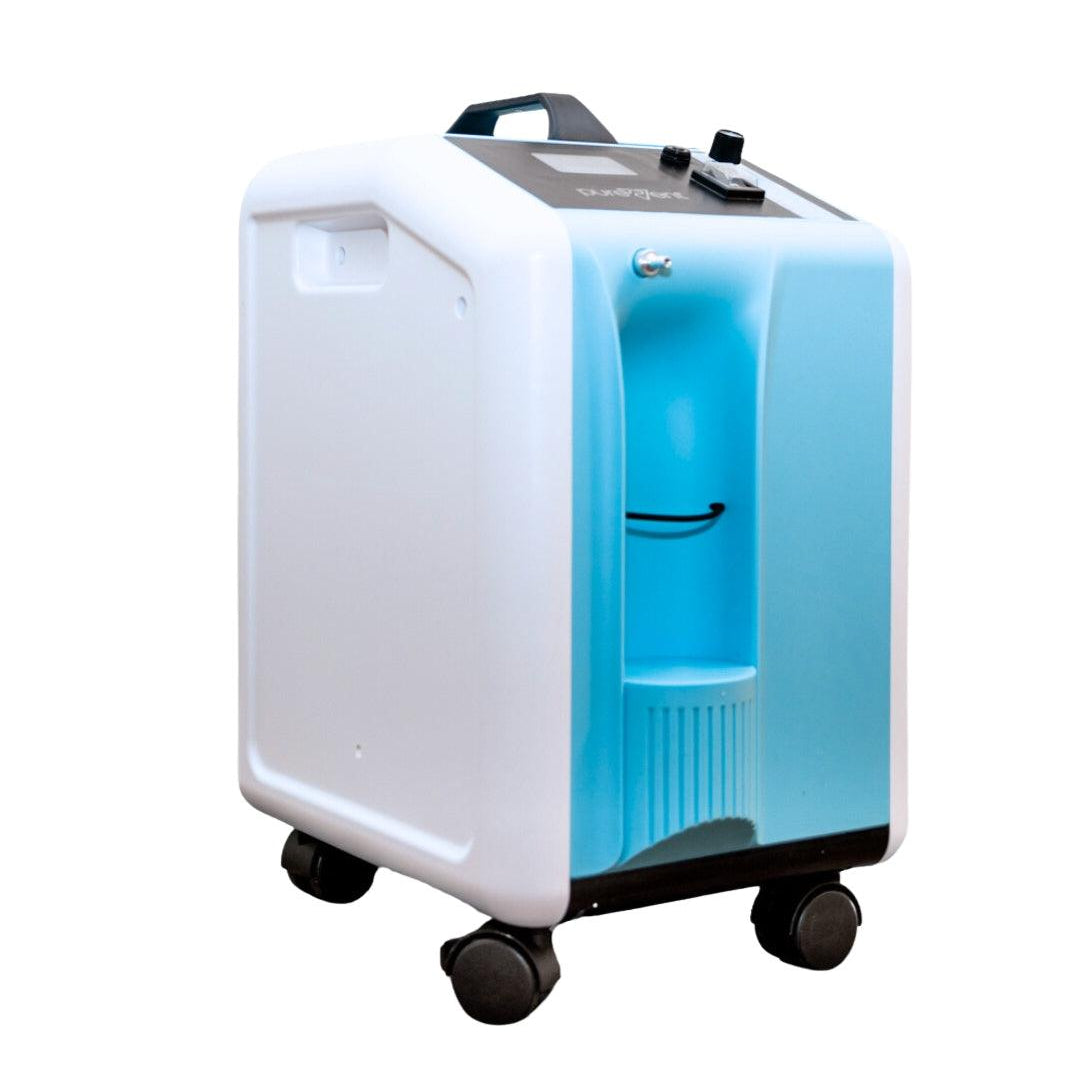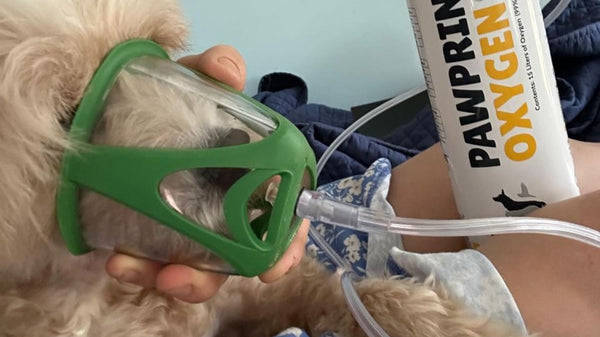Watching your dog experience a seizure can be both frightening and overwhelming. Seizures in dogs range from mild episodes to more severe convulsions, and their causes can vary widely—from underlying health conditions to genetic factors or exposure to toxins. As a pet owner, understanding how to respond when a seizure happens and knowing how to manage mild episodes at home can provide a sense of control and comfort in an otherwise distressing situation.
In this guide, we'll explore effective methods for treating your dog's seizures at home, focusing on creating a safe environment, immediate actions during a seizure, and supportive aftercare steps. We'll also cover supplemental oxygen therapy and how it can support recovery, along with other strategies to help your dog stay calm and comfortable. Knowing when to seek veterinary care is essential, but with the right tools and knowledge, you can play a key role in your dog’s seizure management and well-being.
Table of Contents
Understanding Seizures in Dogs
To effectively manage your dog’s seizures at home, it’s important to understand the basics of what a seizure is and why it may happen. Seizures in dogs are typically characterized by sudden, uncontrolled bursts of electrical activity in the brain, which can lead to various physical symptoms ranging from subtle muscle twitching to full-body convulsions.
Types of Seizures in Dogs
Focal (Partial) Seizures: Focal seizures, also known as partial seizures, occur when abnormal brain activity is confined to one area. During a focal seizure, a dog might display unusual behaviors like excessive drooling, facial twitching, or repetitive movements such as chewing or pawing at the air. These seizures may remain localized or progress into generalized seizures.
Generalized Seizures: Generalized seizures affect both sides of the brain and are more dramatic than focal seizures. These can include full-body convulsions, loss of consciousness, and involuntary movements. Generalized seizures are often what people envision when they think of a seizure, as they tend to be more severe and visually apparent.
Common Causes of Seizures in Dogs
Genetics: Certain breeds, like German Shepherds and Labrador Retrievers, are more prone to seizures due to genetic predispositions.
Trauma: Head injuries can disrupt normal brain activity, potentially leading to seizures.
Toxins: Ingesting toxic substances like chocolate, pesticides, or certain medications can trigger seizures.
Underlying Medical Conditions: Health issues such as epilepsy, liver disease, kidney failure, or infections like distemper can also lead to seizures in dogs.
Recognizing the Signs and Symptoms of Seizures in Dogs
Being able to recognize the signs of a seizure is essential for providing timely support to your dog. Symptoms can vary depending on the type and severity of the seizure:
- Pre-seizure behavior (Aura): Some dogs display unusual behavior moments before a seizure, such as restlessness, whining, or hiding.
- Physical Symptoms During a Seizure: Muscle twitching, uncontrollable shaking, drooling, stiffened limbs, loss of balance, or paddling motions.
- Post-seizure Phase (Postictal): After a seizure, dogs often experience confusion, disorientation, or temporary blindness as they recover. This period can last anywhere from a few minutes to a few hours.
By familiarizing yourself with these seizure types, causes, and symptoms, you’ll be better equipped to monitor your dog’s health and take appropriate steps during and after a seizure event. In the following sections, we’ll dive into practical measures to safely care for your dog during a seizure episode at home.

Preparing for a Seizure at Home
Being prepared for a seizure can make a significant difference in helping your dog remain safe and comfortable during an episode. By creating a seizure-safe environment and assembling a response kit, you’ll be ready to respond calmly and quickly, minimizing risks and stress for both you and your pet.
Creating a Seizure-Safe Environment
Setting up a safe space in your home where your dog can have a seizure with minimal risk is an important preventive step:
- Remove Potential Hazards: Clear any sharp objects, furniture with hard edges, or items that could cause injury during a seizure. If your dog is prone to seizures, consider creating a dedicated “safe zone” with padded surfaces and limited access to potentially harmful objects.
- Keep Other Pets Away: Other animals in the home may become curious or even agitated if your dog has a seizure. To prevent accidental injuries, keep other pets separated from your dog during and after a seizure.
- Secure Staircases and Elevated Areas: Dogs can lose control of their movements during seizures so, if possible, block access to stairs, decks, or other elevated areas to prevent falls.
Assembling a Seizure Response Kit
Having a kit ready with essentials can help you stay organized and focused during a seizure. Your kit can include:
- Towels or Soft Blankets: These can be used to cushion your dog’s head or body during a seizure, especially if they are on a hard surface. Avoid wrapping your dog, as this can cause discomfort or overheating.
- Emergency Contact List: Have contact information readily available for your veterinarian, emergency animal clinic, and any specialists involved in your dog’s care. This ensures that you can quickly reach out if your dog’s seizure is prolonged or severe.
- Notebook or Seizure Log: Keeping a log of each seizure’s date, duration, and observed symptoms can be invaluable for tracking patterns and providing your veterinarian with accurate information. Alternatively, you may wish to use a mobile app designed for pet health tracking.
- Calming Items: Some pet owners find that items with familiar scents, such as a favorite blanket or toy, can help soothe their dog after a seizure, easing the recovery period.
By preparing a seizure-safe environment and assembling a response kit, you can respond more effectively when a seizure occurs. These steps not only prioritize your dog’s safety but also provide you with peace of mind, knowing you’re ready to handle the situation calmly and confidently.
What is a seizure?
A seizure is a temporary episode of abnormal electrical activity in the brain that causes a variety of symptoms, like loss of consciousness, uncontrollable movements, and difficulty breathing.
How do I know if my pet is having a seizure?
Recognizing a seizure can be challenging, especially if you've never seen one before. Some signs that may indicate your pet is having a seizure include uncontrollable muscle movements, loss of consciousness, collapse, excessive drooling, loss of bladder or bowel control, and repeated movements or actions.
What should I avoid doing if my pet is having a seizure?
It's essential to avoid certain actions to ensure both your pet's safety and your own. Here are a few things NOT to do if your pet is seizing: Do not put your hands near your pet's mouth. Do not try to restrain your pet or move them unnecessarily. Do not give them food or medications until they are conscious. Do not shout or make loud noises. Do not panic.
Immediate Actions During a Seizure
When your dog experiences a seizure, it’s natural to feel a surge of anxiety, but remaining calm and focused is crucial. Taking the right steps can help ensure your dog’s safety and may even provide some comfort as they go through the episode. Here are some key actions to remember during a seizure to protect your dog without interfering.
Steps to Ensure Your Dog's Safety Without Interfering
- Protect Your Dog from Harm: If your dog is in a location where they could be injured, such as near furniture with sharp edges or close to a staircase, gently and carefully move obstacles away from their immediate area. Place soft towels or blankets around them to cushion any movements, especially if they are on a hard surface.
- Avoid Physical Interference: It may feel instinctual to hold or restrain your dog, but doing so can cause additional stress and may inadvertently increase the risk of injury for both of you. Instead, focus on making the environment around them as safe as possible.

Using Calming Techniques
- Stay Calm: Dogs are very attuned to their owners' emotions, and maintaining a calm, reassuring presence can help ease some of their stress. Take deep breaths, speak in a soft, soothing tone, and try to avoid any sudden or loud movements.
- Dimming the Lights: Bright lights can sometimes exacerbate seizure symptoms or trigger post-seizure disorientation. Dimming the lights or moving to a darker part of the room may help reduce sensory overload.
- Speak Softly and Reassuringly: While your dog may not be fully aware of their surroundings during a seizure, your voice can be a calming presence. Speak softly and avoid loud sounds or sudden movements, which could be startling when they regain awareness.
Avoiding Actions That Could Worsen the Situation
- Do Not Try to Hold Your Dog's Tongue: Contrary to a common myth, dogs do not swallow their tongues during seizures. Trying to open their mouth or hold their tongue can result in accidental bites or other injuries. Allow their natural reflexes to take over, and focus on ensuring they’re in a safe, secure space.
- Avoid Overstimulating the Dog: Although it’s tempting to help your dog “snap out” of a seizure, trying to stimulate them with excessive petting, sounds, or physical movements can heighten their disorientation. Give them time and space to move through the episode without adding stress.
These immediate actions are designed to protect your dog and provide comfort without inadvertently increasing risk. Remaining calm and knowing what to avoid can help both you and your dog manage these moments with as little stress as possible. In the next section, we’ll discuss post-seizure care to support your dog’s recovery.
Aftercare: Supporting Your Dog Post-Seizure
After a seizure, your dog may be disoriented, tired, or even temporarily unresponsive. This post-seizure period, also known as the postictal phase, can last anywhere from a few minutes to several hours, depending on the severity of the seizure. Here’s how you can support your dog’s recovery and ensure their comfort as they regain normal behavior.
Post-Seizure Disorientation: Helping Your Dog Recover Safely
- Guide Your Dog to a Calm, Quiet Space: After a seizure, your dog may be unsteady on their feet and confused. If they attempt to stand, gently guide them to a comfortable, quiet area free from obstacles. Avoid letting them near stairs, elevated areas, or other places where they could fall.
- Keep the Environment Calm: Reduce noise and activity levels around your dog. Other pets or family members should give the dog space to recover. Keeping lights dimmed and voices soft can help ease their transition back to normal.
Monitoring Symptoms and Logging Details of the Episode
- Observe Your Dog's Behavior: Pay close attention to any symptoms that persist after the seizure, such as drooling, weakness, or unusual movements. Noting these details can help your veterinarian assess the severity of the seizure and any potential underlying causes.
- Record the Episode in a Seizure Log: Keeping a detailed log of each seizure episode—including the date, time, duration, and observed behaviors—can provide valuable insights into your dog’s seizure patterns. If possible, try to note any potential triggers or pre-seizure behaviors that may have led to the event.
Providing Comfort and Reassurance as Your Dog Recovers
- Offer Gentle Reassurance: Once your dog is alert and aware, speak to them softly, providing comfort and security. They may feel disoriented or anxious, so your presence can be incredibly soothing as they regain their bearings.
- Allow Your Dog to Rest: After a seizure, most dogs need time to rest and recover. Avoid overstimulation, and let your dog decide when they are ready to get up and move around again. Offer water if they seem thirsty but avoid food until they are fully alert and steady.
By providing calm reassurance, monitoring any unusual post-seizure symptoms, and keeping a detailed log, you can support your dog’s recovery while gathering important information for ongoing care. These actions not only make the immediate aftermath more manageable but also help you and your veterinarian better understand your dog’s needs for future seizure management. In the next section, we’ll explore how supplemental oxygen therapy can aid in post-seizure recovery and comfort.

Supplemental Oxygen Therapy for Seizure Recovery
Supplemental oxygen therapy can be a valuable tool for helping dogs recover after a seizure. During and after a seizure, a dog’s brain may experience increased demand for oxygen due to the strain of abnormal brain activity. Providing supplemental oxygen can improve recovery, help reduce disorientation and support overall comfort.
Benefits of Oxygen Therapy in Aiding Post-Seizure Recovery
Supplemental oxygen therapy helps replenish oxygen levels in your dog’s bloodstream and brain, which can be especially beneficial following a seizure. Increased oxygen flow helps counteract the effects of brain strain, allowing the brain to return to a calm, stable state more quickly. This can shorten recovery time and make the postictal phase (the period after a seizure) less stressful for your dog.
How Oxygen Therapy Reduces Brain Strain and Improves Oxygen Flow
During a seizure, the brain’s demand for oxygen skyrockets, and some dogs may experience mild hypoxia (oxygen deprivation) as a result. Oxygen therapy provides a concentrated supply of oxygen that can reduce strain on the brain, helping to minimize aftereffects like dizziness, confusion, or lingering neurological symptoms. Improved oxygen flow also supports faster tissue recovery, which may make a noticeable difference in your dog’s energy and responsiveness as they recover.
Using Oxygen Therapy Safely at Home
If you’re considering oxygen therapy as part of your dog’s seizure management, it’s essential to consult with your veterinarian first. Your vet can provide guidance on whether oxygen therapy is appropriate for your dog’s condition and offer specific recommendations for its use at home. Here are a few tips for using oxygen therapy effectively and safely:
- Consult Your Veterinarian: Before implementing oxygen therapy, have a discussion with your vet about dosage, timing, and any safety considerations specific to your dog’s health.
- Choose the Right Equipment: Options for home use include portable oxygen canisters, at-home oxygen concentrators, oxygen chambers, and oxygen masks specifically designed for pets. Your veterinarian can recommend the best option based on your dog’s size and seizure needs.
- Know How to Use the Equipment Safely: Follow manufacturer guidelines closely to ensure proper oxygen flow and equipment handling. Familiarize yourself with how to operate the equipment in a calm environment before your dog has a seizure, so you feel confident when the need arises.
Overview of Pawprint Oxygen Products and Other Oxygen Delivery Methods
For pet owners seeking a convenient, effective way to provide oxygen therapy at home, Pawprint Oxygen offers several options tailored to meet pets’ unique needs. Pawprint Oxygen’s products include portable oxygen kits, concentrators, oxygen chambers, and masks designed for easy and safe administration. These tools can be essential for dogs who benefit from oxygen therapy as part of their post-seizure care.
Portable oxygen kits are an ideal solution for pet owners who want to be prepared for emergency situations, during transportation to a care facility or when administering oxygen to their dog at home post-seizure. The portable oxygen kits contain everything you need to administer oxygen on the spot to your pet, whether at home or on the go.
Oxygen concentrators offer continuous oxygen without the need for refills, making them a practical choice for dogs who require frequent or prolonged oxygen therapy. Pet-specific masks and oxygen chambers are also available, ensuring your dog receives a comfortable, controlled flow of oxygen without added stress.
Incorporating oxygen therapy into your home care plan can make a noticeable difference in your dog’s recovery and quality of life. With the right guidance and equipment, supplemental oxygen can be a reliable way to support your dog after a seizure, helping them regain calm and stability faster. In the following section, we’ll look at long-term strategies for managing canine seizures at home.
Long-Term Management of Seizures in Dogs at Home
Effectively managing your dog’s seizures over the long term involves tracking their health, exploring supportive options, and staying proactive with veterinary care. By monitoring seizure patterns, incorporating beneficial supplements, and maintaining open communication with your vet, you can improve your dog’s quality of life and help reduce seizure frequency and severity.
Monitoring Frequency and Severity of Seizures with a Seizure Log
Keeping a seizure log is one of the most valuable tools for long-term management. By recording each seizure’s date, time, duration, and any noticeable triggers, you’ll be able to track patterns and share this information with your veterinarian. Include notes on the severity of each seizure, any post-seizure behaviors, and any environmental or dietary factors that may have influenced the episode. Over time, a detailed log can help reveal trends, making it easier to adjust treatments and identify triggers that could reduce seizure frequency.
Natural and Dietary Support Options
In addition to prescribed medications, certain natural and dietary supplements may support brain health and potentially reduce seizure frequency in some dogs. While these options should never replace veterinary-prescribed treatments, they can be a beneficial addition to a comprehensive care plan:
- CBD Oil: Cannabidiol (CBD) has been studied for its potential benefits in reducing seizure activity in dogs. Make sure to use pet-specific CBD products and consult your veterinarian for proper dosing and safety information.
- Omega-3 Fatty Acids: Found in fish oil, omega-3 fatty acids have anti-inflammatory properties that may support neurological health. Adding a veterinarian-approved omega-3 supplement to your dog’s diet could help promote brain health.
- Dietary Changes: For some dogs, a diet higher in healthy fats and proteins and lower in carbohydrates may help improve seizure management. Consult your veterinarian or a veterinary nutritionist before making any significant dietary changes to ensure your dog’s nutritional needs are met.
Portable, Low-Pressure 15L Oxygen Canisters
Our oxygen canisters are designed with dogs prone to seizures in mind—they're lightweight, low-pressure, and safe to use during transport, offering a reliable source of support when your pet needs it most.
Each canister holds 15 liters of pure oxygen, and our rescue oxygen kits are available with either 3 or 6 canisters, tailored to your dog's weight and needs. These canisters are especially beneficial for dogs at risk of sudden seizures, providing a quick and easy way to deliver supplemental oxygen in stressful situations.
The canisters are compact enough to fit in your car, travel bag, or pet first aid kit, so you can always be prepared for unexpected moments. With our oxygen kits, pet owners can feel confident in their ability to help stabilize their dog and improve comfort, whether at home or on the go.
Importance of Routine Veterinary Checkups to Adjust Home Treatment Strategies
Regular veterinary checkups are essential for dogs with seizures, as your vet can monitor your dog’s progress, assess the effectiveness of current treatments, and adjust medications or supplements as needed. Over time, factors like age, weight, or changes in seizure frequency may require adjustments to ensure your dog’s treatment remains effective and safe. Your veterinarian can also help you evaluate any new therapies or alternative treatments that may be appropriate as part of your dog’s care.
By diligently tracking your dog’s seizures, exploring natural support options, and maintaining routine checkups, you’re equipping yourself with the tools to manage your dog’s condition effectively at home. Long-term management is all about staying informed, proactive, and attentive to your dog’s evolving needs, helping them live comfortably and safely despite their seizure condition.
When to Seek Veterinary Care
While many mild seizures can be managed safely at home, certain situations require immediate veterinary intervention. Understanding when to seek emergency care, maintaining regular consultations, and exploring medical interventions can all play a crucial role in managing your dog’s condition and ensuring their safety.
Signs That Require Emergency Intervention
Prolonged Seizures: If your dog’s seizure lasts more than three minutes, this is considered a medical emergency known as status epilepticus. Prolonged seizures can lead to brain damage and other severe complications, so immediate intervention is essential.
Cluster Seizures: If your dog experiences multiple seizures within a short period (usually a few hours), known as cluster seizures, take them to a vet immediately. Typically, a cluster seizure is more than three seizures in a 24-hour period. Repeated episodes put significant strain on the brain and body and require prompt medical attention.
Unusual Symptoms Post-Seizure: If your dog has difficulty recovering or displays unusual behaviors (extreme disorientation, aggression, blindness) for an extended period after a seizure, consult your veterinarian. This could indicate complications or underlying issues that need to be addressed.
Importance of Regular Veterinary Consultations
Even if your dog’s seizures appear mild or infrequent, routine veterinary checkups are crucial. Regular consultations allow your vet to assess your dog’s overall health, identify any underlying conditions that could be causing or contributing to seizures, and adjust treatments as needed. Your veterinarian may conduct tests to rule out potential causes, such as liver or kidney disease, brain tumors, or infections that could be triggering seizure activity.
Routine veterinary care also allows for ongoing monitoring of any prescribed seizure medications, ensuring they remain effective and safe over time. For dogs with chronic or severe seizures, close collaboration with your veterinarian helps you stay informed about the latest advancements in seizure management.

Potential Medical Interventions for Severe Cases
If your dog experiences frequent or severe seizures, your veterinarian may recommend medical interventions to help control their condition:
- Anticonvulsants: Common anticonvulsant medications for dogs include phenobarbital, potassium bromide, and zonisamide. These drugs help control abnormal brain activity and reduce the frequency and severity of seizures. Your veterinarian will tailor the dosage and type of medication to your dog’s specific needs, and regular bloodwork is often required to monitor for any potential side effects.
- Advanced Therapies: For dogs with drug-resistant seizures, additional treatments may be recommended, including combination therapies or newer medications like levetiracetam. In rare cases, referral to a veterinary neurologist may be advised for specialized care.
- Dietary Adjustments: In certain cases, your veterinarian may recommend a ketogenic or other specialized diet to support seizure management in combination with medications.
Seeking veterinary care when needed and exploring appropriate medical interventions can make a significant difference in your dog’s quality of life. Knowing the signs that require immediate attention and maintaining an open line of communication with your vet will help ensure your dog receives the best possible care, whether at home or under professional supervision. With the right guidance, you can confidently manage your dog’s seizures and provide them with a safe, supportive environment.
Providing Comprehensive Care for Seizures in Dogs
Managing your dog’s seizures at home can be challenging, but with the right knowledge and preparation, you can make a meaningful difference in their care. By creating a safe environment, responding calmly during seizures, and incorporating tools like supplemental oxygen therapy and natural support options, you’re helping to ease their discomfort and provide comfort during a vulnerable time.
Remember, while many seizures can be managed at home, it’s essential to seek professional guidance and stay in close communication with your veterinarian. Regular checkups and personalized treatment plans ensure that you’re equipped with the latest, most effective methods for seizure care. Tracking patterns and working with your vet allows for a proactive approach, helping you navigate this journey with confidence.
Above all, know that you’re not alone in this process. With the right support, resources, and veterinary partnership, you can manage your dog’s seizures and enhance their quality of life, helping them feel safe, loved, and understood every step of the way.

